David Dye's Blog, page 7
May 15, 2025
6 Practical Ways to Be Easy to Work With
You know that person everyone wants on their team? The one people describe with a big smile and a big thumbs up because, “they’re just so easy to work with”?
Yeah, be that person.
Whether you’re navigating matrixed teams, global time zones, or just trying to make your next meeting suck less—being easy to work with isn’t about being a pushover. It’s about presence, clarity, and follow-through. Here’s how to get there:
Practical Ways to Be a Great Team Player (Asking for a Friend Video Advice, from Doha, Qatar)

If you’re only going to keep a few in your back pocket, start with these:
“Tell me more.”
It’s simple, but powerful. It shows you’re listening, not just waiting for your turn to talk.
“I’ve got this.”
Clear. Steady. No drama. These three words say, “You can count on me,” without making a big deal.
Phrases like these build trust fast. They signal that you’re here to collaborate, not compete.
2. Own Your Strengths. Share Your Pearls.You’ve got skills. Strategic thinking. Creative problem-solving. People magic. Operational excellence. Whatever your magic is—bring it. Own it. And then? Please share it.
Easy-to-work-with people know what they bring to the table—and they make room for others to shine too.
3. Speak Up—and ListenSay what you think. Offer your ideas. Ask the tricky question.
And then listen.
Not to reload.
Not to win.
To understand.
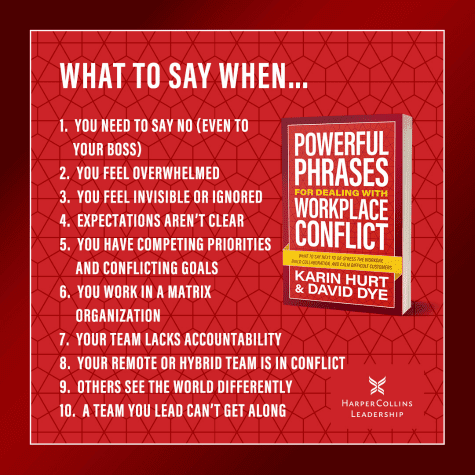 People want to work with folks who make them feel seen and heard, not steamrolled or sidelined.
People want to work with folks who make them feel seen and heard, not steamrolled or sidelined.
You can be brilliant, hilarious, and full of great ideas. But if you flake? That’s what people remember.
Being easy to work with means doing what you say you’ll do—especially when no one’s watching.
5. Understand the Bigger PictureDon’t just finish your tasks.
Zoom out. Ask: How does this help the team? The customer? The mission?
The easiest people to work with are the ones who understand. They don’t just do their part—they make the whole thing run smoother.
6. Find the FunThis doesn’t mean you show up with juggling pins and a kazoo. (Unless that’s your thing).
It just means you’re the kind of person who notices what’s working. You smile, lighten the moment, and remind people it’s okay to breathe.
You make it better to be in the room, even the virtual one.
So Here’s Your Challenge This WeekSay, “Tell me more.”Say “I’ve got this.”Show up. Follow through.Share generously.Laugh when you can.Deliver what you promise.That’s how you get the thumbs up—without ever asking for it.
See Also:
See Also: What should I do if my boss thinks I need to be a better team player? #askingforafriend
How to Manage a Strong, Arrogant, Maybe Even Toxic High Performer
The post 6 Practical Ways to Be Easy to Work With appeared first on Let's Grow Leaders.
May 12, 2025
How to Handle Accountability Conversations: 6 Tough Questions, Answered
You want your team to succeed—and you want them to grow. And you know that means having real accountability conversations, even when they’re tough. But sometimes, those conversations feel more like trying to defuse a live grenade—blindfolded.
The good news? You don’t have to choose between being clear and being kind. You can hold accountability conversations that strengthen relationships and get results.
How? With two popular approaches we cover in our leadership development programs.
The INSPIRE Method: A clear structure for accountability conversations (more here).
The 4Cs in our Performance Loop: Connection, Clarity, Curiosity, and Commitment—four performance dimensions that keep conversations productive.
The INSPIRE Method: A Quick Review
This is your go-to structure for accountability conversations—whether you’re coaching a direct report, discussing an issue with a collegue, or even holding an accountablity conversation with your manager.
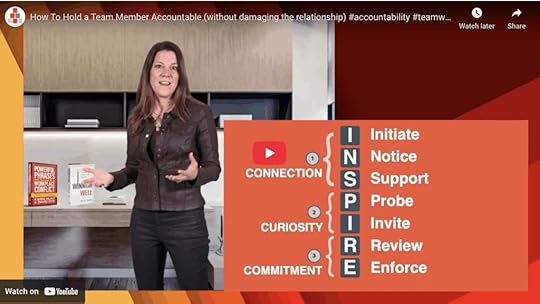
Note: This video comes from our human-centered leadership development series. More information here, about licensing this series for your team.
6 Frequently Asked Questions About Accountability Conversations
Now let’s tackle some of the most frequently asked questions about common frustrations during accontability conversations.
 1. What if they get defensive or shut down completely?Why It Happens:
1. What if they get defensive or shut down completely?Why It Happens:Defensiveness is a natural reaction in accountability conversations. When someone feels judged, shutting down is how some people avoid conflict.
What to Do:Connection: Start with empathy.Powerful Phrase: “I want you to know I’m bringing this up because I care about your success.”
Clarity: Be specific about the behavior.“I’ve noticed that when we discuss feedback, you often seem defensive or withdraw.”
Curiosity: Use open-ended questions.“Can you help me understand what’s most difficult for you in these conversations?”
What ideas do you have for how we can have these conversations be more productive?Commitment: Recap expectations.Great. So we’ve agree to take this approach in thes conversations going forward. Is that your understanding?
If It’s a Pattern:Use the INSPIRE method to focus on the pattern of defensiveness itself:
“I’ve noticed a pattern of defensiveness whenever we discuss feedback. Can you help me understand what’s going on?”
2. What if they cry? Why It Happens:
Why It Happens:Tears can be a natural emotional response, or they can be a way to avoid tough feedback. Some people cry because they’re overwhelmed. Others use tears to shut down the conversation.
What to Do:Connection: Show empathy without losing focus.Powerful Phrase: “Take your time. I’m here.”
Clarity: Make sure they understand why you’re talking.“This is an important conversation because of ________, and I want to help.”
Curiosity: Explore what’s behind the tears.“Is there something specific that’s making this feel overwhelming?”
“How can we make these conversations more comfortable for you in the future?”Commitment: Set a time to have the conversation.Thanks. So let’s schedule time to talk about this at 3pm today.
If Tears Are Their Default:If crying is a regular escape route, it’s time for an INSPIRE conversation about the pattern.
3. What if they deny the behavior? Why It Happens:
Why It Happens:Denial is a classic defense mechanism. They may genuinely not see the problem, feel embarrassed, or think pretending it didn’t happen will make it go away.
What to Do:Connection: Stay calm and respectful.Powerful Phrase: “I’m not questioning your intentions—I’m focused on the specific behaviors I’ve observed.”
Clarity: Use clear, specific examples.“On Tuesday, you missed the deadline. Last Thursday, the report was incomplete.”
Curiosity: Invite their perspective.“Can you help me understand what happened?”
“What can you do to ensure this doesn’t continue?”Commitment: Be clear on what needs to change.As we close, I’d like to check for understanding. What have we agreed to as a next step here.
4. What if they get angry or confrontational? Why It Happens:
Why It Happens:Anger is often a reaction to feeling disrespected, trapped, or powerless.
What to Do:Connection: Stay calm, keep your tone steady.Powerful Phrase: “I can see you’re upset, and we can continue this conversation, and it needs to remain respectful.”
Clarity: Focus on the behavior, not the emotion.“I understand you’re frustrated. I want to help, and we need to keep this constructive.”
Curiosity: Ask for their perspective.“What’s most frustrating for you about this situation?”
Commitment: Set boundaries.“We can continue this conversation, and it needs to remain respectful.”
5. What if they blame others (A Classic Avoiding Accountability Conversations Move) Why It Happens:
Why It Happens:Blame-shifting is a common way to avoid responsibility.
What to Do:Connection: Acknowledge their view without getting derailed.Powerful Phrase: “I hear that you feel others were involved, and I want to focus on what you can control.”
Clarity: Refocus on their actions.“Regardless of what others do, what could you have done differently?”
Curiosity: Explore solutions.“What do you think you can do to prevent this in the future?”
Commitment: Be clear on next steps.“Can we agree that next time, you will [specific action]?”
6. What if they break a commitment? Why It Happens:
Why It Happens:Sometimes they mean well but don’t follow through.
What to Do:Action: Set a clear expectation.“You agreed to complete the report by Thursday, and it’s now Friday.”
Repetition: If it keeps happening, call out the pattern.“This is the third time this has happened.”
Trust: If it continues, focus on the impact on trust.“This has become a trust issue. I need to know I can count on you.”
Your Turn: Let’s add to the list. What are your biggest questions/challenges when it comes to accountability conversations?Accountability conversations don’t have to be stressful. When you lead with connection, maintain clarity, get curious, and secure commitment, you help your team grow without the chaos.
Want even more practical leadership tools? Check out our complete guide to the INSPIRE Method and the 4Cs, or explore our Leadership Development Programs.
See Also: Get Your Team Back on Track, Fast (Video)
Resetting Expectations: Breaking the Cycle of Letting Bad Behavior Slide
The post How to Handle Accountability Conversations: 6 Tough Questions, Answered appeared first on Let's Grow Leaders.
May 9, 2025
1 Incredible Leadership Skill to Improve Productivity and Manage Work-Life Balance
Tired of vague deadlines and Groundhog Day conversations that wreck your productivity—and your work-life balance?
If you’re a leader trying to stay on top of competing priorities while also protecting your team’s time and energy, this episode is your shortcut to clarity. You’ll discover a practical, people-centered communication tool that replaces fuzzy follow-ups with real results—without tipping you or your team into burnout.
Here’s what you’ll take away when you hit play:
A concrete strategy to turn “we should” into “we did” without relying on willpower.A team-tested method to reduce stress, avoid missed deadlines, and deliver with consistency.A reliable way to align expectations and make space for a sustainable work-life balance.Hit play now to learn how to Schedule the Finish and become the leader whose team gets things done—without the overwhelm.
Why “Soon” Isn’t a Strategy—and What to Do Instead[00:53] Stop the cycle of burnout and vague follow-ups.
You know that moment when everyone agrees on something… and nothing actually happens? This is where that ends.
[01:40] The real reason “soon” drives your team nuts.
You say “soon,” they hear next week—or worse, “not important.” It’s not a people problem, it’s a communication gap.
[03:28] Good intentions are not enough.
Even your most motivated team members will drop the ball if you rely on willpower alone. Here’s why structure beats hustle.
[04:42] What “Schedule the Finish” actually means.
It’s more than slapping a due date on a task. You’ll learn how to build clarity, feasibility, and follow-through into every action.
[06:11] Example: from fuzzy idea to calendar event.
Watch a vague “great conversation” become a concrete, scheduled task—complete with accountability.
[06:56] Competing priorities? This is how you get real.
Hear how one team member speaks up about workload—and how that opens the door to honest, effective prioritizing.
[07:40] Let your yes mean yes.
You’ll learn why saying “yes” to everything leads to chaos—and how scheduled finishes protect your real priorities.
[08:30] Use it in performance conversations.
Discover how this technique turns awkward performance chats into clear, encouraging action plans.
[09:18] Use it in delegation too.
You’ll see how to wrap up any delegation with a scheduled return, so you’re never left wondering what happened.
[10:52] Even hallway chats can be action-driven.
That offhand “we should” moment? Learn how to lock it in with a simple follow-up and keep momentum alive.
The post 1 Incredible Leadership Skill to Improve Productivity and Manage Work-Life Balance appeared first on Let's Grow Leaders.
May 8, 2025
Welcome to Team Crickets: How to Support Your Quiet Team
You’re a human-centered leader who wants people to speak up and contribute their ideas. AND, you’ve inherited a quiet team, what to do next?
Dear Asking for a Friend,
“I inherited a team that’s technically strong but emotionally silent. They don’t bring concerns, ideas, or challenges forward. I’ve created space. I’ve told them I want their input. Still, nothing. I’m starting to wonder—what if this has nothing to do with me, but it’s now my responsibility anyway? Asking for a friend, of course.”
You’re not imagining it. Teams can inherit more than processes—they inherit psychological patterns. In Courageous Cultures, we talk about how employees who’ve worked under dismissive, punitive, or inconsistent leaders carry “scar tissue” from past experiences. They’ve learned to survive by staying quiet.
You can be the most empowering leader in the world, but if the team has been trained that speaking up equals risk, they won’t believe you—yet.
5 Practical Ways to Break the Silence and Build Voice

Silence loves to hang out in the shadows. If you want to change the dynamic, you’ve got to bring it into the light.
Try something like:
“I know this team’s been through some seasons where speaking up didn’t always feel safe—or even worth the effort. That’s not lost on me. And I want to change that. But I can’t do it alone.”
When you put the fish on the table with empathy, you’re showing up to write a better next chapter.
2. Start with What Used to Be Off-LimitsAsk questions designed to reverse learned helplessness:
“What’s something we’ve just accepted as normal that doesn’t actually work?”
“What part of our process frustrates you but feels ‘untouchable’?”
You’re not just inviting ideas—you’re inviting people to rewire their assumptions about what’s allowed.
3. Create a Low-Risk Micro-Idea SystemBig ideas feel dangerous. Small ideas feel safe. Build confidence through a weekly ritual like “Tiny Fix Fridays” where anyone can drop one small suggestion to improve how you work.
Rules:
No judgment.
Every idea gets acknowledged.
Close the loop publicly—win or not.
This activates micro-innovation—the foundation of a Courageous Culture.
4. Respond with Regard—VisiblyEven more important than asking is what you do next. When someone takes a risk, validate it. Respond with gratitude and curiosity, even if you disagree.
Try:
“That’s a fresh take. I might not be able to act on it this round, but I’d love to understand the ‘why’ behind it more.”
Consistency here matters more than brilliance. It’s not one perfect reaction—it’s the pattern that rebuilds trust.
5. Reset the Story PubliclyPeople believe what they see repeated. So, repeat stories of brave contribution:
“Last week, Thao suggested a shortcut that shaved 90 minutes off our workflow. That small act made a big difference.”
Make speaking up part of the team’s identity—not an exception, but the expectation.
Silence Isn’t Laziness—It’s Learned. And It’s Reversible.“This is a reset. Not just of performance, but of how we show up for each other. I’m not just looking for ideas—I’m building a team where voice is normal, expected, and protected. If you’ve had reasons to stay quiet before, I respect that. But starting today, let’s try something different. Small steps are enough.”
When you inherit a quiet team, you’re also inheriting their history. But the future is yours to co-create. One psychological nudge at a time.
Your Mini Challenge for This Week:Run a “Past/Present/Future” team moment:
Past: “What’s something you learned not to say in past roles?”
Present: “What’s one thing we could start talking about more openly?”
Future: “If we got really good at raising ideas early—what might change?”
Be ready to model the vulnerability first.
Another Idea? Why not read (and discuss) our book, Courageous Cultures, as a team. We’ve made it easy to read it together with a variety of companion tools and discussion guides.
Check out: Leadership Book Club: How to Read Courageous Cultures With Your Team.
The post Welcome to Team Crickets: How to Support Your Quiet Team appeared first on Let's Grow Leaders.
May 5, 2025
4 Critical Communication Skills for Managing Up with Style and Grace
“How do I change my boss?” This is one of the most frequently asked questions we hear from participants in our leadership development programs. So, let’s get this out of the way: You can’t change your boss. No matter how much you might wish otherwise, you can’t control another person’s behavior—especially someone with more formal authority. But what you can do is influence. Managing up means strengthening the relationship, communicating more effectively, and creating the conditions for more productive, strategic conversations. You can use four communication skills to be more influential, get more done, and reduce your stress:
Practice Two-Level Thinking,Communicate with Data and InsightSay Yes to Say NoAsk Permission When Offering Critical FeedbackFour Communication Skills for Managing Up Like a ProThese four communication skills will help you manage up with confidence, clarity, and credibility—without coming across as a kissing up, being political, or trying too hard.
1. Understand What Matters Two Levels UpTo influence your manager, start by understanding what matters to them—and to their boss. This approach, called two-level thinking, helps you align your communication with organizational priorities.
Before you make a request or recommendation, ask yourself:
What results is my manager accountable for?What is their manager focused on?What goals do they need to achieve?What pain do they need to avoid?How can I position my message to support those goals?Example:
Instead of saying, “My team is burned out,” try:
“This pace is starting to impact quality, which could affect our client retention goals. Can we explore adjustments that keep us on track for this quarter?”
The more relevant your message is to their strategic objectives, the more influence you’ll have.
How to Learn What Matters Most When Managing UpYou might read this and think, “Okay, but how do I know what my boss’s boss thinks?” Here are several respectful, professional ways you can learn what your boss’s boss cares about—without overstepping or appearing political.
Ask Your Manager Directly and RespectfullyFrame your curiosity by highlighting your commitment to shared success. For example:
“As I think about how I can contribute more strategically, I’d love to better understand how our team’s work connects to our senior leadership’s priorities. What are the key outcomes our department is focused on this quarter?” Or: “I’m working on aligning my priorities with the bigger picture. What would success look like from [senior leader’s name]’s perspective?”
Pay Attention to What Your Manager PrioritizesListen for repeated themes, urgent projects, or frequent mentions of specific results or metrics. If your manager consistently talks about customer churn, speed to delivery, or talent development, it’s likely those are areas their leader is tracking closely as well.
Ask yourself:
What metrics does my manager focus on in meetings?Which projects are getting the most attention or resources?What does my manager seem most accountable for?Attend All-Hands or Town Hall MeetingsIf your organization offers senior leadership updates, show up with intention. Listen for the language and outcomes that your boss’s boss emphasizes—these are clear signals of what matters.
Take note of strategic themes, KPIs or milestones, cultural or operational messages they repeat. Then connect your work—and your conversations with your manager—back to those objectives.
Review Public CommunicationsIf your organization publishes annual reports, press releases, strategic plans, or internal newsletters, read them. These often reflect leadership’s stated goals and values.
Here are key times you can look for:
Mission or vision languageStrategic goals or themes (e.g., growth, innovation, efficiency)Named priorities for the quarter or yearAsk Cross-Functional Peers or MentorsIf you know someone who has worked closely with senior leadership or sees more of the big picture, you can ask informally: “In your experience, what seems to be most important to [name or role] right now?”
This is especially helpful in matrixed environments where priorities shift quickly or vary by function.
Watch Where Resources GoYou can often tell where your leadership’s focus is by looking at where they invest time, budget, or people.
By asking and observing with humility and purpose, you show initiative and build trust while helping you lead more effectively from where you are.
2. Communicate with Data and InsightWhen you want to influence your manager, make the business case. That means bringing data, yes. But your boss needs more than just your numbers. They need you to provide context, interpretation, and make a clear recommendation. When you present data:
Share the story behind the numbers.Offer a point of view or recommendation.Anticipate and answer your manager’s likely questions.
Example:
“Based on the current trends, I recommend we shift resources to this initiative for the next 60 days. You probably have some questions about what will do to xyz. I’ve reviewed the tradeoffs and can walk you through the implications.”
Bringing both insight and structure to the conversation helps your manager make informed decisions—and builds your credibility.
For more on managing up with data, check out: Managing Up: Turning Information into Influence with Your Boss
3. Say Yes to Say No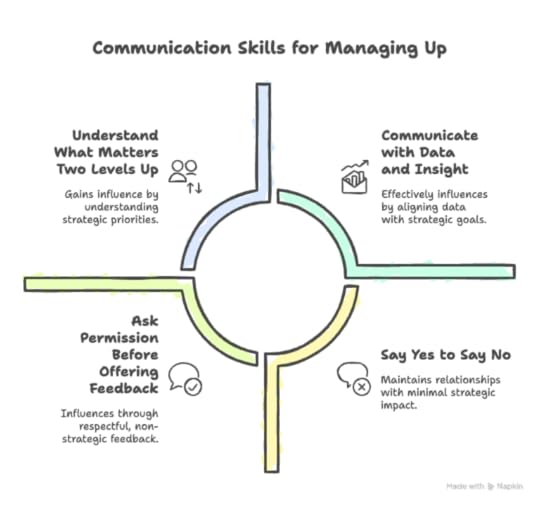
©Karin Hurt and David Dye 2025
If your manager makes a request that just isn’t feasible, a direct “no” can feel rude or dismissive. Instead, affirm the underlying goal and then clearly explain the tradeoffs, followed by a constructive alternative.
Example:
“I see how important this is, and I want to support it. Adding it now would delay project A, which we identified as critical for this quarter. One option would be to adjust the timeline or bring in additional help. What are your thoughts?”
This approach shows your commitment to shared success.
For more on managing up when you’re overwhelmed or need to say no, check out:
Overwhelmed at Work? How to Express Your Stress and Get the Help You NeedSetting Healthy Boundaries: What to Say When You Need to Say No (podcast)4. Ask Permission Before Offering FeedbackProviding potentially critical feedback to your manager is sensitive. To do it effectively, tie your feedback to a shared goal and ask for permission first. This gives your manager the opportunity to engage willingly, which makes the conversation more productive.
Example:
“I know increasing client retention is a top priority. I’ve observed something that might help. Would you be open to a quick idea?”
If they agree, share your feedback respectfully and concisely. If they decline, let it go and maintain the relationship. The goal is to offer value—not to correct.
Your Turn
These four communication skills for managing up will help you build a more effective and strategic relationship with your boss. Developing these skills takes intention and practice. But as you use them consistently, you’ll find more clarity, confidence, and impact in your communication. Here are some reflection questions to help you apply these skills:
Which of these communication strategies do you most need to strengthen?What are your manager’s top three priorities right now—and how can you align with them?What’s one upcoming conversation where you can use “say yes to say no”?
The post 4 Critical Communication Skills for Managing Up with Style and Grace appeared first on Let's Grow Leaders.
May 2, 2025
3 Delegation Leadership Skills that Improve Productivity and Reduce Overwhelm
Episode 301: What if the key to improving productivity is simply learning how to delegate without anything falling through the cracks?
Delegation is supposed to free up your time and build your team—but if you’re constantly chasing updates or getting back subpar work, it can feel more like a trap than a tool. This episode tackles that head-on, giving you the exact steps to make sure delegation actually works the way it should—clear, clean, and effective. Here’s what you’ll walk away with:
A simple mindset shift to prevent micromanaging while still ensuring success
A foolproof way to make sure your team meets deadlines without you chasing them
One underrated but powerful technique to close the loop and guarantee follow-through
Hit play now and learn the three must-have delegation skills that’ll save you time, reduce stress, and finally make delegation work the way it’s meant to.
Mindset Shifts for Effective Delegation[00:54] – Delegation is Essential; But Often Frustrating
Even seasoned leaders struggle with delegation when tasks fall off the radar—this episode tackles the root of the issue to drive improved productivity.
[02:45] – Why Delegation Matters
Delegating frees you to focus on what only you can do, develops your team’s skills, and can even lead to improved productivity when others outperform you in specific tasks.
[04:24] – Before You Delegate, Set the Stage
Ensure team members are trained and informed—this upfront clarity prevents missteps later and leads to smoother workflows and improved productivity.
[05:16] – Delegate the Outcome, Not the Process
Resist the urge to micromanage. By clarifying what success looks like and giving your team ownership, you foster innovation and improved productivity.
[06:54] – Use Clear Criteria and Check for Understanding
Avoid vague instructions. Clear expectations and confirming your team’s understanding helps eliminate rework, boosting trust and reduce overwhelm.
[08:43] – Set a Clear Finish Line
Many tasks drag on because there’s no agreed-upon deadline. Setting a finish line brings focus and urgency, directly fueling improved productivity.
[10:16] – Schedule the Finish
One of the most powerful tools: schedule a meeting to receive the completed task. This accountability checkpoint leads to significantly improved productivity across teams.
[12:56] – Structure Milestones for Long-Term Projects
For lengthy timelines, insert milestone meetings with tangible deliverables—this keeps momentum alive and improves productivity by ensuring regular progress.
[14:24] – Replace “How’s It Going?” with Deliverable-Based Check-ins
General updates don’t cut it. Asking team members to bring something specific to check-ins ensures real progress and improved productivity.
[15:33] – Recap: The 3 Delegation Skills for Better Results
To ensure improved productivity, always: 1) delegate the outcome, 2) set a clear finish line, and 3) schedule the finish. Together, these prevent dropped balls and build a high-performing team.
The post 3 Delegation Leadership Skills that Improve Productivity and Reduce Overwhelm appeared first on Let's Grow Leaders.
April 28, 2025
How to Disagree with Your Boss Without Derailing Your Career
Ever faced one of those moments when your boss rolls out a decision and your gut screams, “Nope!”? Maybe it’s off-brand, ethically sketchy, or just a bad call. You know staying silent feels wrong—but speaking up? That can feel even scarier. What if you blow the relationship? Will it wreck your credibility? What if you get sidelined or even fired? While these fears are natural, your ability to disagree with your boss respectfully is vital for your success.
The Leadership Opportunity When You Disagree with Your BossThese are the exact moments where real leadership is born because disagreement isn’t disrespect. In fact, we regularly hear from senior leaders who crave constructive pushback. They need an informed point of view and want perspective. They need someone to spot the blind spots they can’t see. Disagreeing with your boss (when done right) isn’t insubordination—it’s strategic influence.
So how do you speak up and show up as a credible thought partner?
Step 1: Talk to Yourself FirstBefore you schedule a meeting or fire off an email, pause. The most important conversation starts with you. Begin by connecting to your values.
Ask: “What do I want to happen because of what I say?”
This question grounds you in intention—not reactive emotion. You’re not venting; you’re advocating for something that matters.
One common trap you can fall into when you disagree with your boss is to focus on your boss admitting that they’re wrong. This is a trap because it puts you and your boss into automatic opposition. You’re not focused on achieving a good outcome for the team, customer, or company—instead, it becomes about who’s right and who’s wrong.
Avoid this trap by clarifying what success looks like for your team, your integrity, and your boss.
When you’re really fired up, reframe the story. Your boss probably didn’t wake up plotting unethical chaos. Their decision makes sense to them in some way.
Step 2: How to Gauge If Your Boss Is Open to DisagreementBefore you step into a high-stakes conversation, it’s smart to read the room—especially if that room includes your boss. Here’s how to assess whether your boss is open to disagreement without guessing or gossiping.
1. Watch How They Handle Pushback from OthersOne of the fastest ways to evaluate your boss’s openness is through observation. How do they react when someone else offers a different opinion?
Do they ask follow-up questions? That’s a good sign.Do they get defensive or shut it down? Proceed with more caution.Do they thank people—even when they disagree? That’s gold.Also pay attention to who they listen to. If your boss only listens to peers or higher-ups, you may need to anchor your message in what matters to their boss or broader business goals. (For more on this check out this podcast episode on “Two-Level Thinking.”)
2. Check Their Reaction to Honest FeedbackHave you or others ever given them honest feedback? How did they respond? You can even test with a low-risk comment like:
“I noticed that in our last meeting, a few folks hesitated to speak up. Do you think there’s something we could do to create more openness?”
Their answer will reveal a lot. If they get curious, they’re likely open. If they dodge or dismiss, you’ll need a more strategic approach.
3. Listen to Their LanguagePay attention to how they talk about leadership. Do they use words like:
“Team input”“Diverse perspectives”“Push back”“Challenge me”If so, they may genuinely want disagreement—but not drama. You’ll need to bring clarity and data, not just emotion.
If their language leans toward:
“Do what I say”“We don’t have time for debate”“My way or the highway”Then approach more cautiously, focusing your approach on shared outcomes, data, and two-level thinking.
4. Use a Curiosity OpenerBefore jumping into the disagreement, try a “calibrated curiosity” phrase:
“I’ve been thinking about this initiative, and I have a few concerns I’d love to bounce off you. Would now be a good time—or is there another moment we could talk through them?”
This lets you read their tone and gives them the option to opt into the conversation.
5. Look for Patterns Over TimeDon’t base your decision on one moment. If your boss usually reacts defensively in meetings but later reflects and changes course, they may just need time. Factor in their stress levels, timing, and context.
A boss who’s open to disagreement usually shows it in three ways: how they respond, what they say, and how often they create space for input. If they don’t show these, it doesn’t mean you can’t disagree with your boss—it just means you’ll need to be even more thoughtful about how you do it.
Step 3: Prepare Like a Strategic PartnerNow it’s time to prepare for the conversation. You’re not showing up to complain—you’re there to add value.
Prepare for the conversation by ensuring you have answers to questions like these:
What’s the business or reputational risk?How does this decision align (or misalign) with strategic goals?What’s an alternative solution?When you disagree with your boss, you can start the conversation with something your boss already values. For example:
“I want to make sure this event lands well with key stakeholders. I’m concerned a few of our tactics might hurt credibility. Can I share what I’m seeing?”
This aligns your concern with shared outcomes. You’re not attacking—you’re inviting dialogue.
Step 4: Create Space for Real ConversationDon’t drop a disagreement bomb in the hallway. Schedule time. Honor the moment. When you meet, start with connection:
“I care about this team and our reputation. I’m confident we can find a solution we both feel good about.”
Then lean into curiosity:
“I’m curious how this looks from your perspective.”
Use reflective listening:
“What I’m hearing you say is that speed to market is the top priority—even if it comes with some short-term risk. Do I have that right?”
This reduces tension, builds trust, and paves the way for co-creating a solution.
Step 5: Align and ActAs you conclude the conversation, you might get the result you wanted. Or you might have learned something you didn’t know and changed your mind. Either way, wrap up the conversation by aligning on your commitments:
“What’s one action we can both agree to as a next step?”
Then recap:
“So we’ve agreed to _______. Is that your understanding?”
When You Disagree with Your Boss and It Doesn’t Go Your WayYou might read this and think, “There’s no way this will work with my boss. They won’t change their mind.”
First, you don’t know until you try. Your manager might surprise you when you bring a well-reasoned approach that helps your boss, your team, and the business.
But yes, it’s possible you’ll hit a wall. Not every manager is open to feedback. But even then, you gain something crucial—clarity. You learn whether this is a values clash you can live with—or not. And that’s data you didn’t have before the conversation.
Sometimes, the greatest act of leadership is walking away from a situation that compromises your values.
Your TurnWhen you disagree with your boss—and do it well—you’re not being difficult or a rebel. You’re providing valuable perspective, modeling courage for your team, elevating the conversation, and building a more resilient culture.
So next time your gut says, “This isn’t right,” don’t freeze. Pause. Prepare. Speak up.
You might be surprised how much power your voice carries.
You Might Enjoy:Managing Up: Turning Information into Influence with Your BossHow to Disagree with Your Boss Using These Problem Solving Skills (podcast)Why “Agree to Disagree” Stinks and What to Say Instead for Better Work RelationshipsWhen You’re the Scapegoat: Powerful Phrases to Address Unfair BlameManaging Up With Grace (How to Give Your Boss Better Feedback With Video)The post How to Disagree with Your Boss Without Derailing Your Career appeared first on Let's Grow Leaders.
April 25, 2025
Help! Workplace Distractions Stole My Zen (and Left a Trail of Bananas)
Workplace Distractions Laughed and Brought Snacks
You cared out the time, turned off your notifications to remove workplace distractions. Maybe you’ve even gathered your team around a campfire (or at least a flip chart), and focused on what matters most. Strategy. Innovation. That MIT (Most Important Thing) you’ve been meaning to tackle. You found your Zen.
And then?
Here come the monkeys.
Workplace distractions in disguise, dropping from the trees like a chaotic flash mob. One swings in on Slack. Another climbs out of your calendar. Your boss appears with just one more thing. Your phone? Full-blown monkey carrier.
🐒 The Monkeys Are Back (and They Brought Friends)Today’s “Asking for a Friend” advice comes from the Lady Budha Temple in Da Nang, Vietnam, where we were on a Courageous Leadership speaking tour in partnership with Together We Can Change the World.

Watch this video from the Lady Budha Temple in Da Nang, Vietnam.
So how do you stay focused on your most important priorities without turning into the leader version of that viral “nope” meme?
🐐 Start With a GOAT
When someone’s asking for help, start with a GOAT Powerful Phrase from Powerful Phrases for Dealing with Workplace Conflict:
“What would a successful outcome do for you?”
This is leadership gold for managing workplace distractions. It has two benefits.
It creates clarity about what the other person wants.
And, it might reveal that their ask isn’t nearly as big as it first sounded.
You might discover they don’t need a full rescue—just a rope. Or better yet, a referral.
🎯 Be Clear About Your NeedsNext, it’s time to advocate for yourself with compassion and courage.
Try something like:
“I had planned to focus this time on [insert priority]. I want to be helpful—let’s talk about other ways I might support you.”
You’re not saying no. You’re saying not like that, not right now. You’re inviting them into a more strategic conversation.
🤔 Ask, Don’t AssumeInstead of defaulting to “Sure, I’ll do it,” try:
“What’s the timeline for this?”
“What have you tried so far?”
“Who else might be a good fit to help?”
These curiosity-based GOATs flip the script. Now they’re thinking strategically, and you get to protect your calendar without guilt. You help them without taking on their workplace distractions.
See Also: Empower Your Team to Make Better Decisions (Video)
📚 Offer Resources, Not RescueSometimes the most helpful thing you can do is point people to tools, templates, or training—especially if they just need a boost, not a business partner.
Consider:
“I’ve got a great resource that helped me when I ran into something similar. Want me to send it your way?”
Support doesn’t always have to mean doing the thing.
📅 Schedule, Don’t ShoulderIf it is something you can help with—just not today—offer a future slot.
“Could we circle back to this next week when I can give it proper attention?”
Boundaries. Maintained. Trust. Preserved.
The Bottom Line?Your strategy deserves protection. Your time is finite. And your monkeys? They’re sneaky. But with a few GOAT-level phrases and a healthy dose of leadership clarity, you can stay focused and show up supportive.
And next time someone asks you to jump in and save the day?
You can smile, take a breath, and say:
“Tell me more.”
Because you’ve got this. And the workplace distraction monkeys?
They’ll have to find someone else’s strategy meeting to crash.
The post Help! Workplace Distractions Stole My Zen (and Left a Trail of Bananas) appeared first on Let's Grow Leaders.
3 Overlooked Communication Skills to Be a Leader People Want to Follow
Episode 300: What separates a leader people want to follow from one they just tolerate—and could it be as simple as how you say, “Great job”?
If you’re like most leaders, you’re juggling tasks, solving problems, and keeping your team afloat—but somewhere in the chaos, encouragement gets overlooked. And yet, your team is craving it. This episode dives into a surprisingly powerful leadership skill that could be the key to unlocking energy, productivity, and loyalty: meaningful encouragement.
Here’s what you’ll walk away with:
A simple framework to deliver praise that actually fuels performance (no fluff or empty cheerleading).Smart ways to tailor encouragement so it lands personally and powerfully with each team member.The one critical mistake most leaders make when trying to recognize effort—and how to avoid it.Press play now to learn how to become the kind of leader people don’t just work for—but want to follow.
Be the Leader People Remember: Mastering the Art of Encouragement[00:00] Setting the Stage for Encouragement
Host David Dye opens the 300th episode by reflecting on podcast milestones and celebrating listener support. He sets the tone by asking when you last received genuine encouragement—planting the seed for today’s central theme.
[01:59] Encouragement as a Leadership Differentiator
David frames encouragement not as fluff, but as a core leadership skill. If you want to be a leader people truly want to follow, learning how to recognize effort and impact authentically is key.
[03:25] The Story of Jennifer: Encouragement Missed
A high-potential employee leaves her job because no one told her she was doing well. This story illustrates the damage that can result when leaders fail to provide meaningful encouragement—even when they think they’re being supportive.
[05:17] One Word That Defines Great Leadership
Chief Sales Officer John shares his leadership philosophy: find the one thing someone is doing well and build from there. His secret to success? You guessed it—encouragement.
[06:40] Skill #1: Be Specific with Encouragement
David breaks down how being precise about what someone did and why it mattered transforms encouragement from generic praise into motivational fuel. It’s the first step in becoming the kind of leader people value.
[07:34] Skill #2: Make Encouragement Meaningful
Encouragement is only effective when it resonates personally. Through real examples, David explains how to tailor your appreciation to each team member’s personality and preferences.
[09:50] Recognition in the Details
From coffee orders to learning opportunities, small gestures of personalized encouragement go a long way. David reminds leaders that it’s the thoughtfulness—not the grandness—that makes the difference.
[11:28] What Not to Do: When Encouragement Misses the Mark
A leader sends cupcakes to say thanks—but one employee can’t eat sugar. This segment highlights how encouragement done without context can feel impersonal or even exclusionary.
[12:34] Skill #3: Make Encouragement Relevant to Work
David reveals the importance of aligning encouragement with both performance and values. Reward the how as much as the what if you want to be a leader people admire for integrity, not just outcomes.
[14:23] Final Reminder: People Need to Feel Seen
The episode wraps up with a call to action: don’t let your encouragement be generic, misplaced, or overdue. Whether new or tenured, every team member needs to know they matter—and you, as a leader, can be the one who shows them.
The post 3 Overlooked Communication Skills to Be a Leader People Want to Follow appeared first on Let's Grow Leaders.
April 21, 2025
The Collaboration Checklist for Leaders: Five Questions to Guide Better Decisions
You move fast. Decisions pile up. Calendars fill. But in the rush to deliver, it’s easy to overlook the moments that make or break real collaboration—the ones where people feel included, respected, and clear on what’s happening and why. This simple collaboration checklist for leaders gives you a pause-and-reset moment before the next big move.
And behind each question? The 4 Cs of Collaboration from our SynergyStack® Team Development System: Connection, Clarity, Curiosity and Commitment.
The Power of a Collaboration Checklist
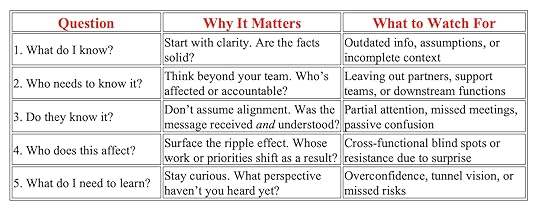
Start by asking: What information am I holding that others need?
In fast-moving, cross-functional environments, critical context often lives in one person’s head. A quick pause to inventory what you know—status updates, decisions made, shifting priorities—can save teams from confusion or misalignment later.
Example:
You’ve just left a meeting where leadership agreed to change the product roadmap. Before diving back into your own tasks, you flag the update to your GTM partners, knowing they’re planning next week’s customer communications. Sharing early gives them time to adapt—and shows you’re thinking beyond your lane.
If you skip this step, you accidentally become a blocker. Others move forward without the context they need, and collaboration gets replaced by cleanup.
2. Who needs to know it? (Connection + Commitment)Think beyond your immediate team. Who’s connected to this work? Who will be held accountable for outcomes even if they weren’t consulted?
Example:
Suppose your product team finalizes a feature change. Before sharing the update, you consider which partners are affected. You loop in customer success and legal early, giving them a chance to prepare for client impact and compliance questions—before it goes live.
If you skip this step, critical voices are left out, and what could have been a smooth rollout becomes a scramble to patch avoidable gaps.
3. Do they know it? (Clarity + Curiosity)It’s one thing to communicate. It’s another to ensure people understand–and had the chance to respond.
Example:
You mentioned a shift in campaign timelines during a weekly sync. But pausing to check, you realize the engineering lead didn’t attend, and the sales ops partner was multitasking. A follow-up message, tailored to what each team needs to know, keeps alignment intact.
If you skip this step, people feel out of the loop, execution suffers, and trust in cross-functional coordination erodes.
See Also: Beyond Magical Thinking: How to Ensure Your Team Gets It
4. Who does this decision affect? (Connection + Curiosity)Every decision has a ripple effect. Ask: Whose work, priorities, or relationships does this touch—even if they’re not in the room?
Example:
You’re adjusting priorities in a matrixed program that spans engineering and operations. Before moving ahead, you check with the program manager who’s coordinating a related launch. They flag a dependency that hadn’t been considered. You adjust course to avoid a traffic jam two weeks down the line.
If you skip this step, you’re likely to hit resistance later—not because people don’t support the decision, but because they weren’t seen in it.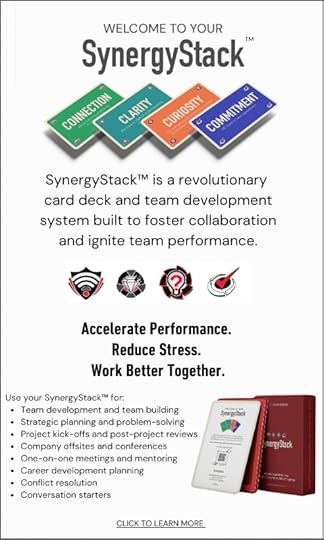
Is there a perspective missing? A risk that hasn’t been surfaced? A team that sees this differently based on their priorities?
Example
You’re proposing a new workflow to streamline approvals. Before finalizing, you check in with a peer in compliance. They point out how a small change could avoid future audit issues. You wouldn’t have seen it without their lens.
If you skip this step, you move ahead confidently—until someone raises an issue that could’ve been addressed with one earlier conversation.
Five Questions. Four Cs. Real Collaboration.This isn’t a long process or a formal exercise. It’s a short pause that invites better leadership.
This collaboration checklist for leaders is your quick way to anchor decisions in Connection, Clarity, Curiosity, and Commitment—the same four skills that turn conflict into progress and conversations into real trust.
Use it before your next meeting. Before you roll out a change. Before you assume alignment.
Because the best human-centered leaders don’t just move fast—they pause with purpose.
See Also: Matrix Organization: Powerful Questions to Reduce Angst and Increase Trust
My Boss Thinks I Need to Be a Better Team Player: Now What Do I Do?
The post The Collaboration Checklist for Leaders: Five Questions to Guide Better Decisions appeared first on Let's Grow Leaders.









